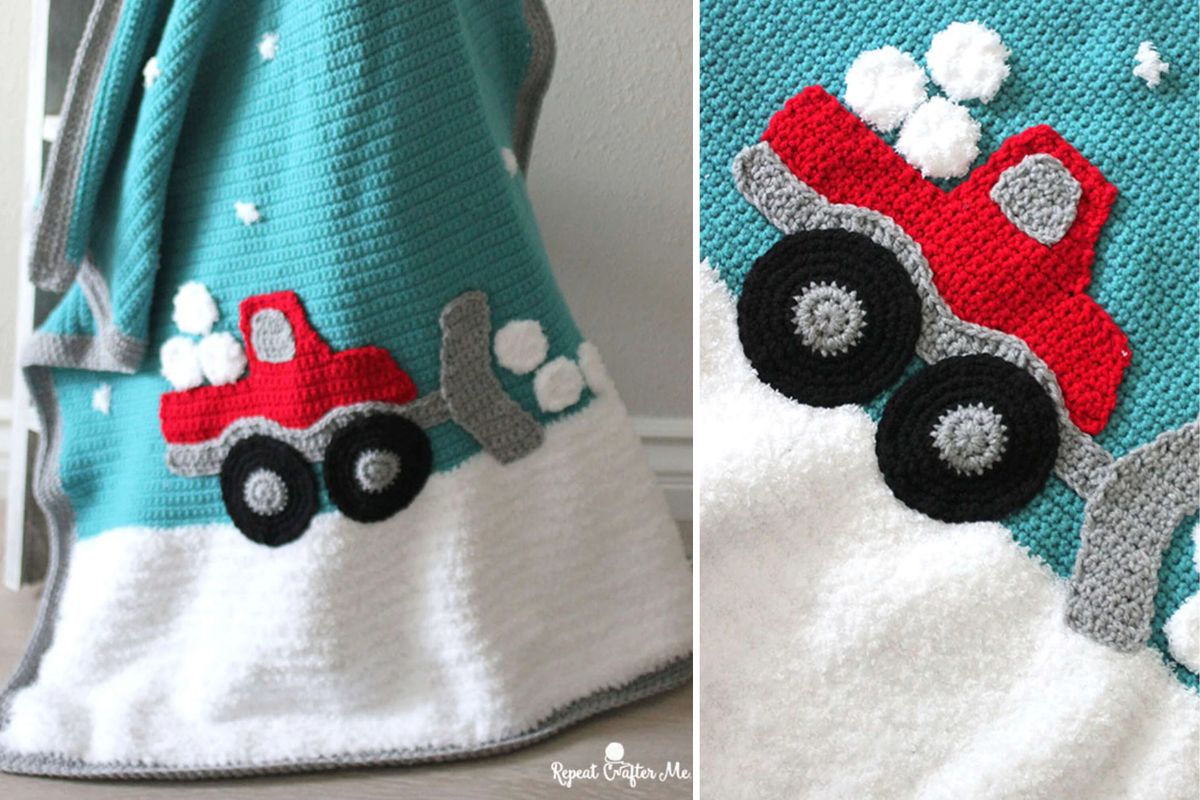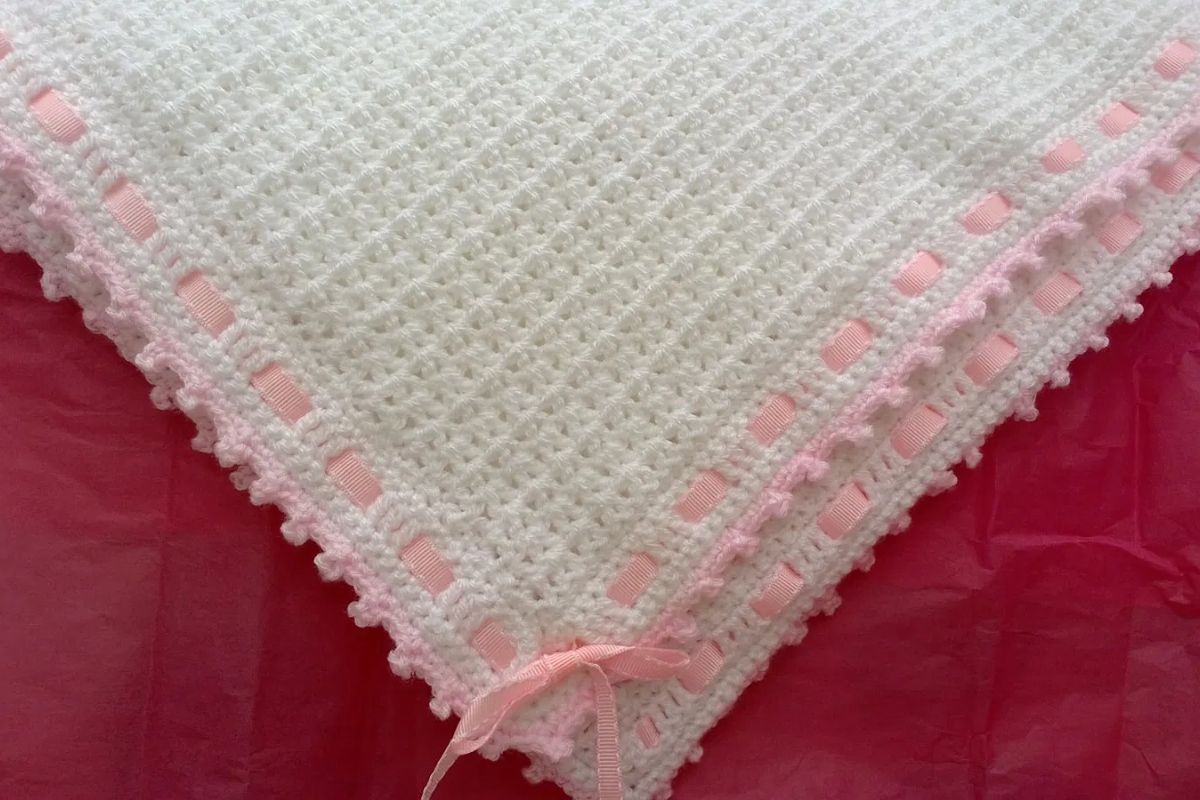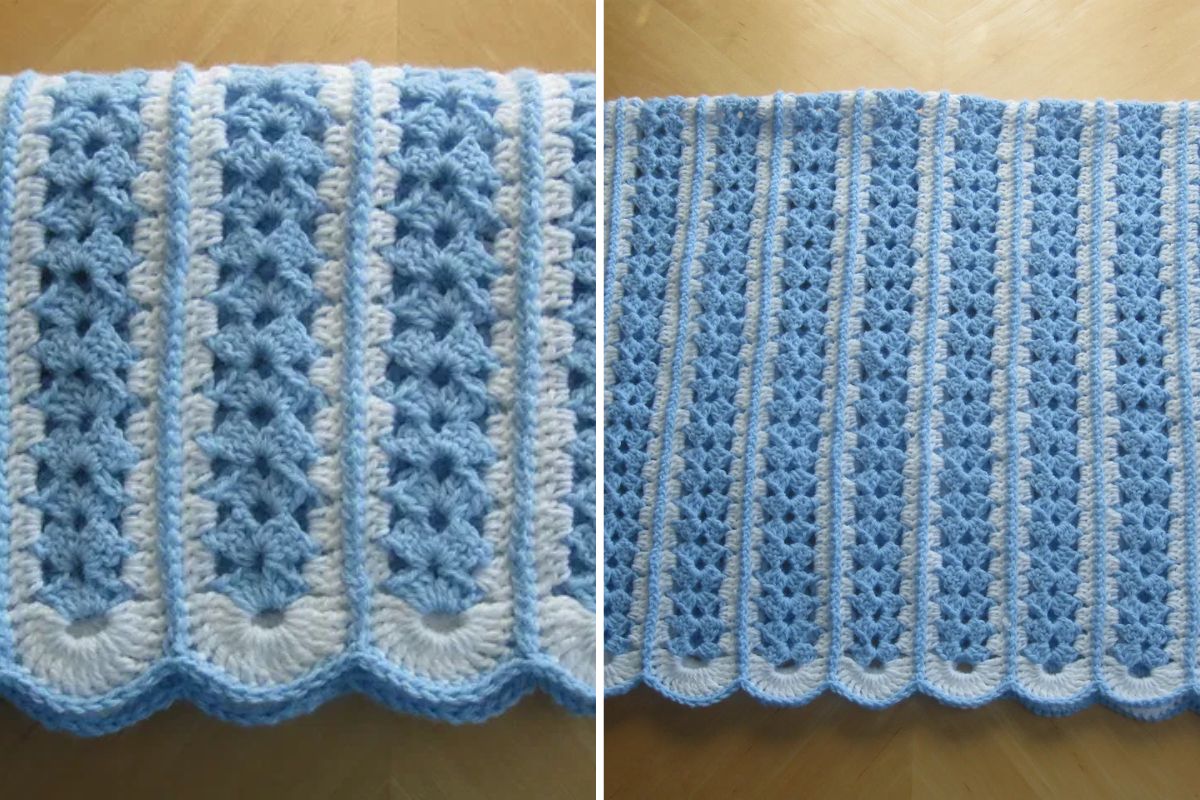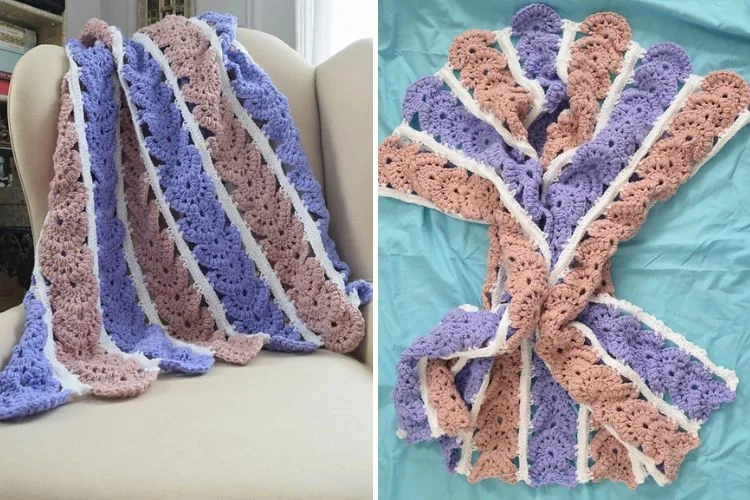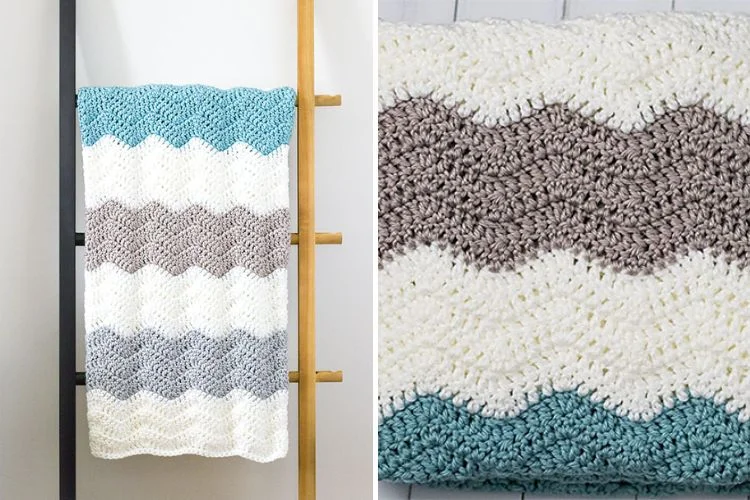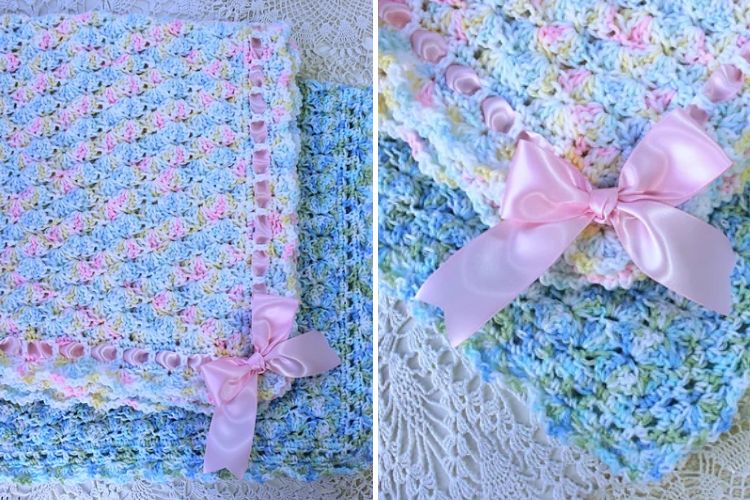Donna Laing’s Sideways Shell Baby Afghan Crochet Pattern is a great project for those looking to create a cozy and decorative baby blanket. You can choose from a wide range of colors to create a unique handmade item that suits your personal taste or matches the nursery’s décor.
Can Beginners Crochet the Sideways Shell Baby Afghan?
Whether you’re a beginner or a seasoned crafter, this crochet baby blanket pattern allows you to create a beautiful, cherished keepsake. It will also make a thoughtful, handmade gift for new parents and their little one.
This project is a great opportunity for you to practice shell stitches – one of the most iconic crochet techniques and an absolute must-learn for all crocheters.
If you have never tried shell stitches before, check out this easy-to-follow tutorial before getting down to this project.
Essential Supplies You’ll Need
You can make this blanket with any worsted-weight yarn you want or have in your stash. However, since this item is intended for babies, it’s much better to go with a machine-washable yarn that is durable and easy to clean.
Red Heart Soft, Knit Picks Brava, Caron Simply Soft – these 100% acrylic yarns are a great choice for baby blankets, so consider using one of them. To complete it, you will also need a
5.5 mm (I) crochet hook.
How to Crochet the Sideways Shell Baby Afghan
The beauty of this baby blanket project lies in its simplicity. It features a repeating shell stitch pattern that is easy to grasp even for beginners. You start crocheting it by making a foundation chain, and then continue working the second row until you reach the desired length for your blanket.
What Size is the Finished Blanket?
When crafted with worsted weight yarn and a 5.5 mm hook, this piece results in a baby afghan measuring approximately 30” x 38′‘. Its versatile design can be customized to various sizes, making it suitable for a variety of purposes, from baby blankets to lap throws.
How to Adjust the Blanket’s Size
The original sample has 92 stitches in the starting chain. To make it wider, you need to increase the number of stitches using the multiples principle – in this case, a multiple of 3 + 2.
This means you should start by chaining any multiple of 3 (like 30, 33, 36, 39, etc.) and then add 2 more chains at the end. Don’t want to do the math? Use our Number Multiples Generator to quickly figure out the number of required stitches for your project.




